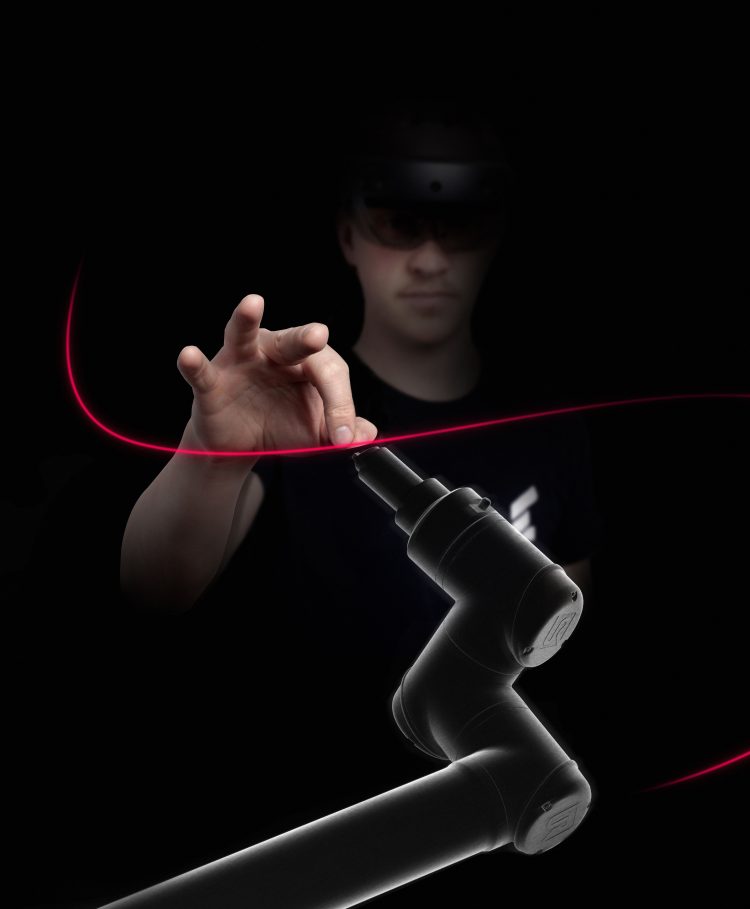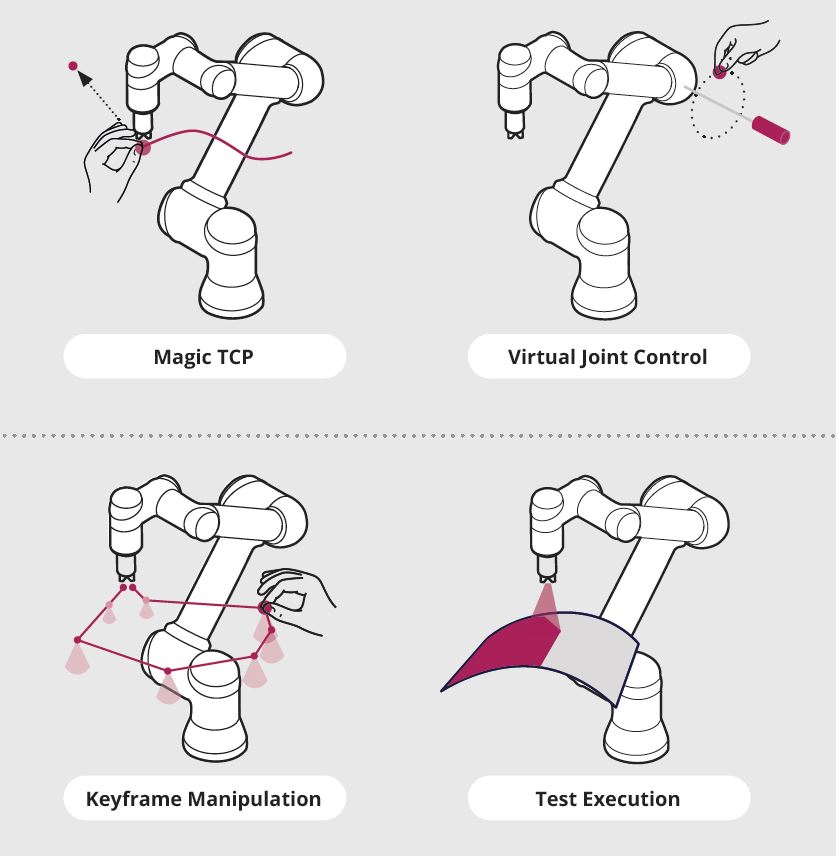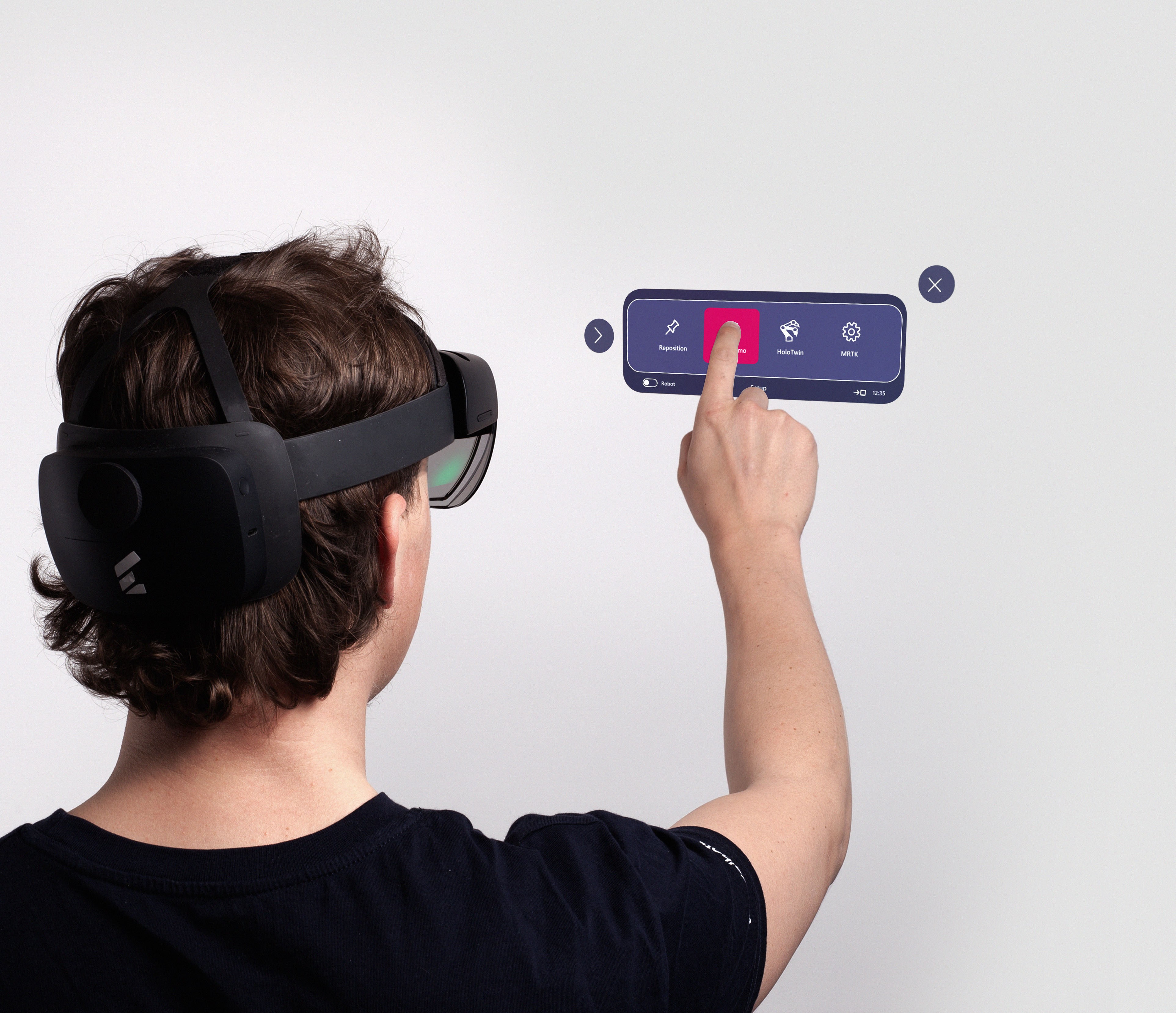
Diplomarbeit: Entwurf eines Augmented Reality Interface zur Vereinfachung des Roboterprogrammierens
Die Programmierung von Robotern ist in der Regel ein zeitaufwändiger und hochkomplexer Prozess, der Expertenwissen voraussetzt. Wandelbots ist bekanntlich dabei Lösungen zu entwickeln, die es nicht-professionellen Nutzern ermöglicht Industrieroboter zu programmieren. Carolin Horn hat in ihrer Diplomarbeit bei Wandelbots dafür einen neuen Ansatz entwickelt: Ein Augmented Reality (AR) Interface zur Vereinfachung und Beschleunigung der Roboterprogrammierung. Teil ihrer umfangreichen Arbeit waren Experteninterviews, Co-Design-Workshops, schnelle Prototypen und User Experience Evaluation. Es folgt hier das Abstract ihrer Diplomarbeit.

Robot programming requires specialized knowledge and is usually a time-consuming and highly complex process. While the availability of experts is low, the relevance of robots is increasing due to the need for flexible production environments. Providing solutions for non-professional users my thesis is about designing and testing an Augmented Reality (AR) interface for simplifying and accelerating robot programming.
AR interface offers natural interaction such as hand gestures with holograms. Due to the possibility to superimpose virtual simulations over reality, innovative use cases arise. In a user-centered product development in cooperation Wandelbots expert interviews are conducted to research possible pain points and use cases. Subsequently, interdisciplinary company-intern teams generated and developed use cases in design thinking workshops. Three scenarios are derived and visualized in storyboards, one of them is selected for further development by applying decision-making criteria. With the aid of the scenario and personae, functional and formative requirements are deduced, forming the prerequisite for the development. Having user journey and personae in mind, quick prototypes are built and tested with various tools from sketches up to C# programming.
In the last step, the AR interface and its interaction concepts are verified in a user experience
(UX) test setup. Not only functionality and usability are tested but also non-instrumental aspects of UX. The thesis concludes with an assessment of the prototype and its further development.






